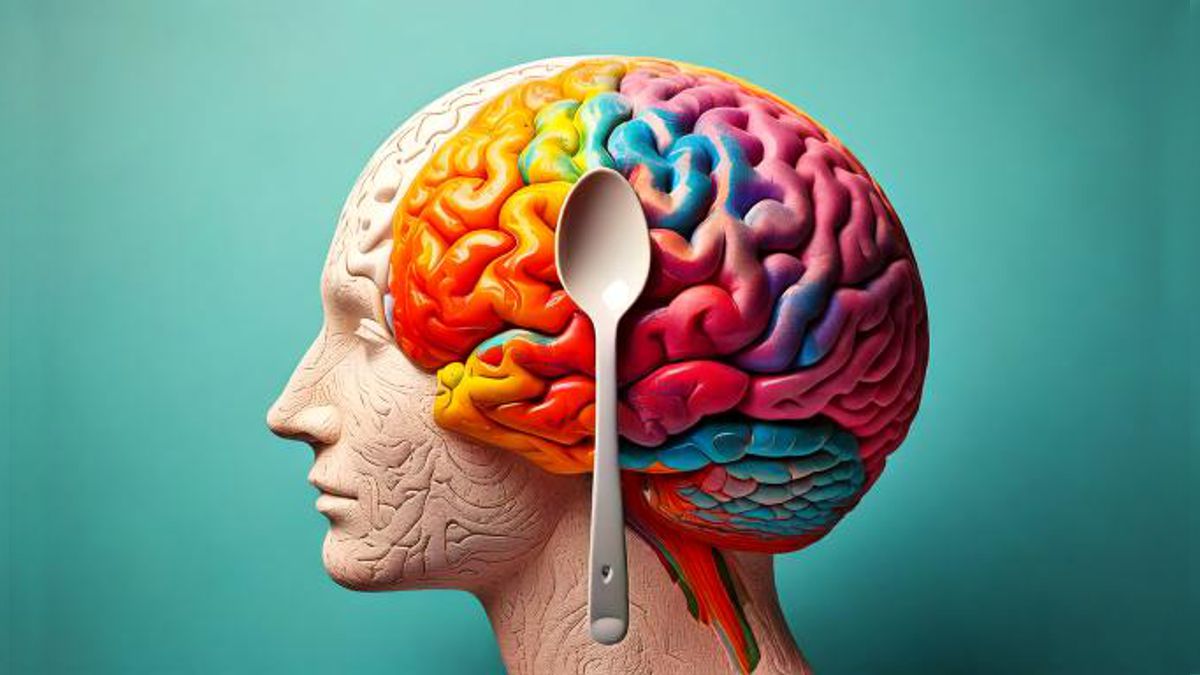
A few months ago, we discussed the mesmerizing environmental prevalence of non-biodegradable microplastics, and the toxic components thereof, embedded in virtually every consumer good, the air, the soil, and the water supply, sloughing off into the human body through the lungs, intestines, and even through the skin.
It’s a problem, one that the Public Health™ authorities thus far have exhibited very little interest in acknowledging, much less solving.
(And why would they, when there’s yet no obvious pharmaceutical profiteering angle? Once Pfizer develops an mRNA microplastics therapeutic that they can bilk the government for at $1,000/shot, Paul Offit and Co. will get on board.)
Related: Ousted Director Francis Collins Demands Americans Pay ‘Utmost Respect’ to NIH
Here we’ll discuss why microplastics are, in fact, a major public health problem, in case any skeptics still exist.
First, microplastics in the air, land and sea migrate into every organ where they burrow and from which they cannot feasibly be eliminated or degraded.
Via Yonsei Medical Journal (emphasis added):
“Microplastics are easily ingested due to their micro-level sizes. They also move easily through the food chain and persist in the environment since they are refractory to biodegradation. In addition, as microplastics exist in micro-level to nano-level sizes, they are virtually impossible to remove once released into the environment. Due to these characteristics, microplastics pose potential hazards to humans and the environment. As a representative example of the risk posed by microplastics, they can cause physical and mechanical harm (e.g., cause abnormalities in internal organs) to marine organisms when they mistakenly ingest microplastics. Ecotoxicity may be caused by the polymer itself, unreacted monomers, impurities (e.g., residual catalysts or reaction by-products), additives (e.g., stabilizers), or other substances in the polymer matrix (e.g., dyes, lubricants, or plasticizers). In addition, microplastics can enter the human body when they are not filtered out during sewage-treatment processes, or they can flow into the sea, thereby posing risks for the ecosystem and humans. Various examples of damage caused by microplastics have been reported, such as microplastic accumulation in the bodies of marine and aquatic organisms (leading to malnutrition), inflammation, reduced fertility, and mortality. The threats that microplastics present to the human body have not yet been clearly identified. However, previous reports have shown that ultrafine microplastic absorption resulted in complex toxicity in zebrafish, and that microplastics under 100 nm in size can reach almost all organs after entering the human body. Therefore, concerns exist regarding the negative effects of continuous microplastic accumulation in the human body.”
But wait, there’s more!
It turns out that microplastics have a very particular affinity for conglomerating in, of all organs, the brain, where they are found at concentrations up to 30 times greater than in the kidneys or liver.
Cadavers diagnosed with dementia contain higher levels of microplastics than those with normal brains, indicating a correlation and potential causation between microplastics and neurodegenerative disease.
Via Nature (emphasis added):
“Brain tissues harbor higher proportions of polyethylene compared to the composition of the plastics in liver or kidney, and electron microscopy verified the nature of the isolated brain MNPs, which present largely as nanoscale shard-like fragments. Plastic concentrations in these decedent tissues were not influenced by age, sex, race/ethnicity or cause of death; the time of death (2016 versus 2024) was a significant factor, with increasing MNP concentrations over time in both liver and brain samples (P = 0.01). Finally, even greater accumulation of MNPs was observed in a cohort of decedent brains with documented dementia diagnosis, with notable deposition in cerebrovascular walls and immune cells…
The present data suggest a trend of increasing MNP concentrations in the brain and liver. The majority of MNPs found in tissues consist of PE and appear to be nanoplastic shards or flakes. MNP concentrations in normal decedent brain samples were 7–30 times greater than the concentrations seen in livers or kidneys, and brain samples from dementia cases exhibited even greater MNP presence.”
Furthermore, there are numerous highly plausible mechanistic explanations for how microplastics might lead to a slew of neurodegenerative disorders like Alzheimer’s, ALS, etc.:
- Neuroinflammation
- Disturbed brain cell homeostasis
- Mitochondrial dysfunction
- Toxic protein aggregation (amyloid beta and tau)
- Impaired synaptic communication
Via Nanomaterials (emphasis added):
“Nano- and microplastics (NMPs), with nanoplastics posing higher risks due to their smaller size and greater capacity for cellular and subcellular penetration, are being referred to as ubiquitous environmental neurotoxicants, due to their ability to pass through biological barriers, including the blood–brain barrier (BBB) and nasal olfactory epithelium, and to remain lodged in neural tissue. Upon uptake, such particles disturb neuronal homeostasis by multiple converging pathways, including oxidative stress, mitochondrial dysfunction, pathological protein aggregation, and chronic neuroinflammation, all closely involved with the molecular signatures of neurodegenerative disorders (Alzheimer’s, Parkinson’s, Amyotrophic Lateral Sclerosis—ALS). In addition to their neurotoxicity, recent findings suggest that NMPs could disturb synaptic communication and neuroplasticity, thereby compromising the brain’s capacity to recover from an injury, a trauma, or neurodegeneration, thus impacting the progression of the disease, our ability to treat it and eventually the efficacy of rehabilitation approaches.”
Microplastics appear particularly detrimental to the blood cells that are critical for delivering oxygen and nutrients to the tissues.
Via Zoological Research (emphasis added):
“This study used single-cell RNA sequencing to comprehensively evaluate the effects of polystyrene nanoparticle exposure on erythropoiesis in zebrafish embryos. In vivo validation experiments corroborated the transcriptomic findings, revealing that polystyrene nanoparticle exposure disrupted erythrocyte differentiation, as evidenced by the decrease in mature erythrocytes and concomitant increase in immature erythrocytes. Additionally, impaired heme synthesis further contributed to the diminished erythrocyte population. These findings underscore the toxic effects of polystyrene nanoparticles on hematopoietic processes, highlighting their potential to compromise organismal health in aquatic environments.”
Related: WHO Accuses Anti-Vaxxers of ‘Anti-Science Aggression,’ Calls Them ‘Killing Force’
Last but not least, perhaps unexpectedly, microplastics are also boons for pathogens in terms of hardening their resistance to antibiotics.
Via Applied and Environmental Microbiology (emphasis added):
“Microplastics (MPs) have emerged as a significant environmental pollutant with profound implications for public health, particularly as substrates to facilitate bacterial antimicrobial resistance (AMR). Recently, studies have shown that MPs may accommodate biofilm communities, chemical contaminants, and genetic material containing AMR genes. This study investigated the effects of MP concentration, composition, and size on the development of multidrug resistance in Escherichia coli. Specifically, we exposed E. coli to varying concentrations of different MP types, including polyethylene, polystyrene, and polypropylene, across a range of sizes (3–10, 10–50, and 500 µm). Results indicated that the biofilm cells attached to MPs had elevated multidrug resistance (in E. coli. Notably, MPs exhibited a higher propensity for facilitating biofilm and resistance than control substrates such as glass, likely due to their hydrophobicity, greater adsorption capacities, and surface chemistries. Notably, we found that the bacteria passaged with MPs formed stronger biofilms once the MPs were removed, which was associated with changes in motility. Thus, MPs select cells that are better at forming biofilms, which can lead to biofilm-associated AMR and recalcitrant infections in the environment and healthcare setting. Our study highlights the importance of developing effective strategies to address the challenges posed by MPs.”
If that’s all rightfully terrifying, let not your heart be troubled, as RINO goon Sean Hannity would say. (I unfortunately listened to way too much Sean Hannity back in the day when the CD player in my car broke and I resorted to talk radio for in-drive entertainment.)
In an upcoming article, I’ll explore some of the exciting potential ways to prevent, and possibly eliminate, microplastics accumulation in the body.











